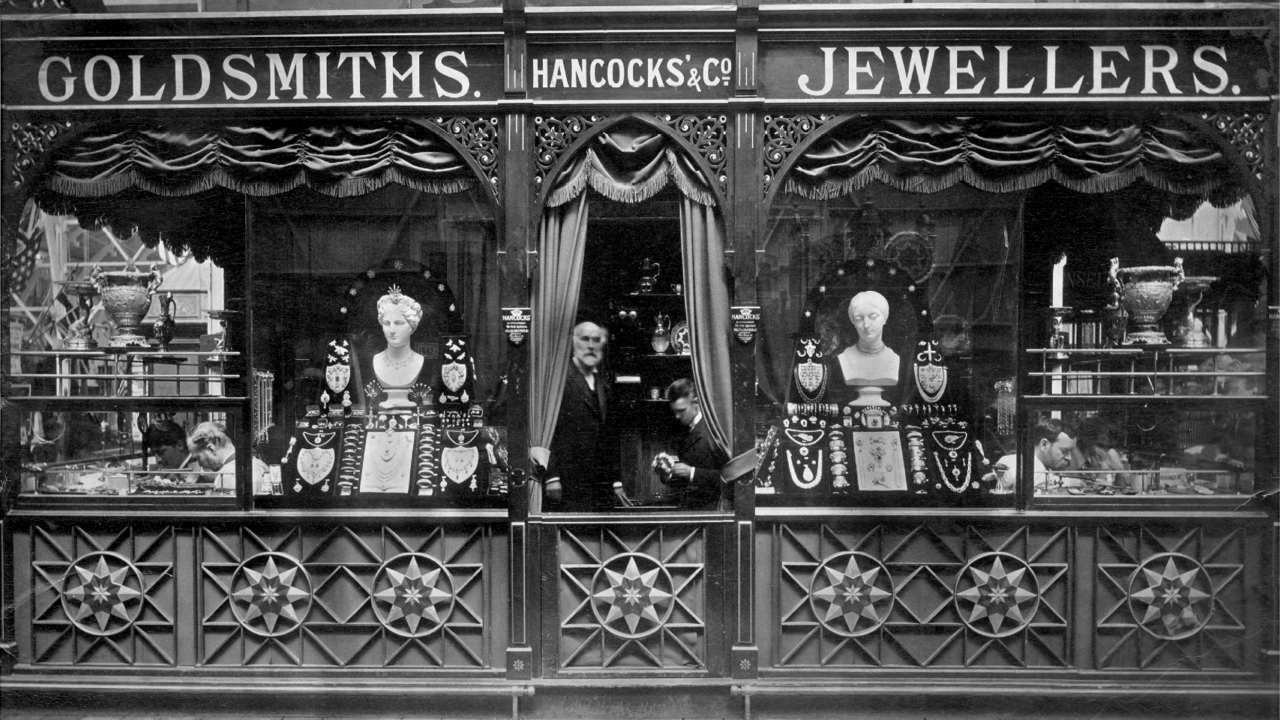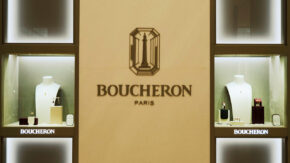In March, UK-based antique-jewelry and diamond specialist Hancocks moved from its cramped premises in London’s Burlington Arcade to a grand Georgian townhouse in nearby St. James’s, and reinstated the original House of Hancocks name it had at its founding 175 years ago.
The jeweler has been a destination for American customers since the 1890s — mostly from the east coast, but the visual charm of its antique-cut gemstones and bold mid-century gold jewelry has more recently begun luring clients from the San Francisco and Los Angeles areas.
This may be “because antique stones are recycled diamonds, which, in terms of carbon footprint, [are] the most responsible way of buying,” suggests Hancocks managing director Guy Burton. However, “when they start investigating [what we have], they [also] realize these are phenomenal, rare cut stones.”
House of wonders
The new townhouse features three floors of gallery space that showcase dazzling estate jewelry — including a floor devoted to bespoke engagement rings with vintage-cut diamonds — as well as heritage exhibitions and a library. Hancocks was in the arcade for 26 years, and the small space “did not befit what we sell, which are some of the rarest jewels on the market,” says Burton.
Among those jewels are antique tiaras — an item Hancocks once made — and Victorian, Edwardian, and mid-century jewelry. “We are going back to being a jewelry house with galleries of carefully curated antique pieces and making it more experience-led, with the aim of it becoming a destination,” the director explains.
In addition, the galleries offer an educational experience, with exhibitions and talks on topics such as collecting vintage Cartier, diamonds through the decades, and Colombian emeralds.
The American angle
In the 1890s, American clients were collecting important gems and natural pearls, a desire that remains largely unchanged. Today, however, they have higher standards for their stones’ quality, especially when it comes to the loose, antique-cut diamonds that Hancocks custom-sets into rings.
Demand “has really accelerated in the last three or four years,” Burton says, especially for old mine cuts, as well as “lovely Georgian and late-Victorian stones, mostly from Indian and Brazilian mines and masterfully cut.”
There is also widespread American interest in Burmese rubies and Colombian emeralds. Nearly all these precious old stones get reset at Hancocks. “Some people prefer a bit of juxtaposition: lovely old cuts in a more modern setting,” explains Burton. “Some gemstones, like Colombian emeralds, lend themselves to a bezel setting that automatically makes them feel contemporary. And other times, I will use as inspiration a [Victorian] design that Hancocks was making 170 years ago and create a modern version of an old style.”
US clients remain largely interested in 1920s and ’30s step-cut jewels, “that geometric Art Deco look that is ingrained in American tastes,” he adds. “It was a revolutionary design period, and they love these big cut corners and faceted faces.”
Supply chains and retro links
Burton admits it’s challenging to source quality Victorian and Georgian estate pieces due to the high demand for the style, but he has a circle of trusted suppliers who have a passion for old-cut stones. He’s also seen a steady stream of people wanting to sell their heirlooms discreetly.
Aside from precious antique diamonds, Hancocks carries estate jewelry from Van Cleef & Arpels and Cartier, as well as from the Victorian era — a time when London was a center for diamond cutting.
However, the market buzz nowadays is for yellow gold and strong 20th-century retro periods — “post-war 1940s, ’50s, ’60s, [as well as] ’70s chunky gold jewelry, [and pieces going] all the way to the ’80s, because these are very wearable,” he says, pointing to gold Hermès link bracelets, Tiffany & Co. zodiac pendants, and works by designer Georges Lenfant as styles that are hitting the sweet spot with customers.
In the spotlight
One of the most desirable engagement rings at Hancocks features three old European brilliant-cut diamonds in 18-karat gold and platinum, with ornate engraving around the shank.
“Antique three-stone diamond rings are very hard to produce, but this represents what I do and what I want to achieve,” explains director Guy Burton. It took eight months to assemble the stones, which are of fine quality: a high-clarity F color, which is rare in antiques.
“The symmetry is fantastic, and the faceting and the matching of the periods is perfect,” says Burton. “You need a center stone with two side stones that are fitting of the period and have the same table and height, which is very hard to match” — not an issue “you would think about with modern stones.”

Main image: Hancocks display at the Vienna Exhibition, 1873. (Hancocks)
This article is from the March-April 2024 issue of Rapaport Magazine. View other articles here.
Stay up to date by signing up for our diamond and jewelry industry news and analysis.



